Lobbyists coined the term “the race to 5G”. If there ever was such a race, South Korea won it as unlike other markets there are – read on – many reported numbers to support a leadership claim. With 4.7 million 5G subscriptions by the end of 2019, 7% of Korea’s mobile subscribers used 5G just nine months after launch.

The subscriber take-up has been fast, but not linear. In August, September and October, when Samsung launched three new 5G smartphones (Note 10, A90 and Fold) and LG updated its V50 smartphone, 5G sales was exceptionally fast. During November and December no new smartphones were introduced and South Korea missed the expectation of 5 million 5G subscribers by year end 2019.
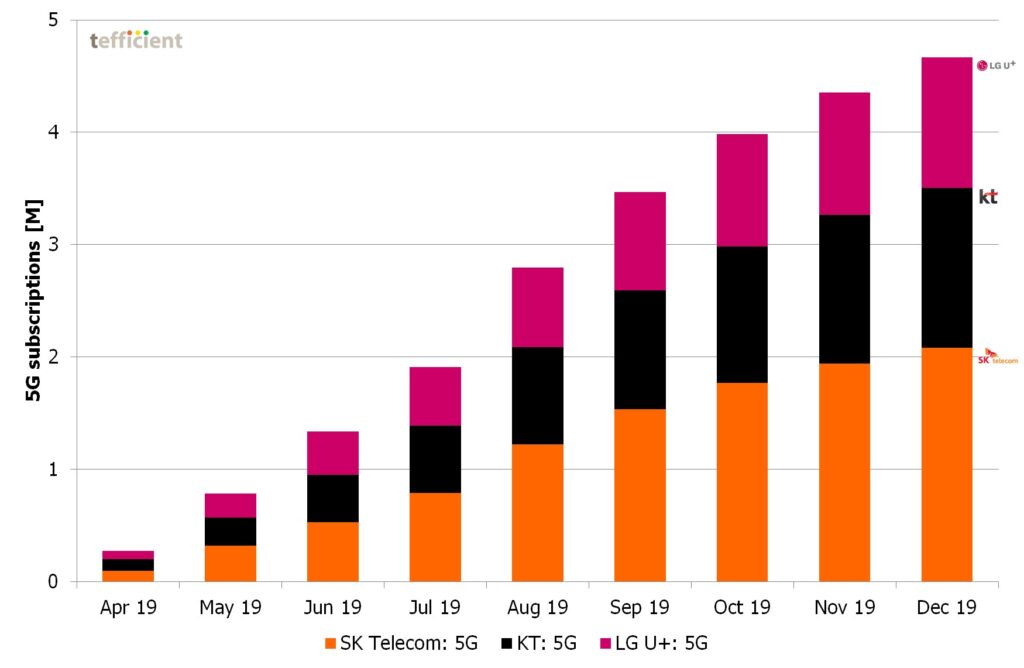
The incumbent mobile operator, SK Telecom, is the largest also in 5G, having surpassed 2 million subscribers. The fixed line incumbent KT has 1.4 million whereas the challenger, LG U+, is approaching 1.2 million.
What isn’t visible in the chart is that 5G in December was made available to MVNOs for the first time. KB Kookmin Bank’s MVNO service Liiv M launched 5G 16 December over the LG U+ network. Their plans are cheaper, but also more limited, than the plans of the MNOs. Liiv M seems to have had a slow start; just 187 5G subscribers came via MVNOs in December, but we should expect MVNOs to, over time, reach the same 10-12% market share in 5G as in 4G.
We mention pricing since the entry ticket to 5G has been quite expensive. At launch, the cheapest 5G plan was priced at 55000 KRW – that’s 42 EUR. For that price only 8 or 9 GB of data is allowed per month. The unlimited plans are between 75000 and 130000 KRW (between 55 and 97 EUR). Since the average ARPU is around 35000 KRW (27 EUR) it’s easy to see that the Korean operators priced 5G with a significant premium.
Consequently, Korean ministers have several times expressed their disappointment with the pricing of the 5G plans, stressing the need for more affordable plans – and more affordable 5G smartphones. Almost all of the 5G smartphones sold in Korea to date have been in the 1000+ EUR category. The government was also upset on Samsung for not having made the Note 10 available as a 4G model in Korea. At this occasion, the ministry and the industry were holding hands, though:

Today, LG U+ has introduced an 8 GB 5G plan for ‘just’ 45000 KRW – but it is just sold to youth and seniors. The previously mentioned MVNO, Liiv M, is also providing 5G plans at yet lower rates.
One might think the cheaper 5G plans would have dominated the sales in Korea, but that is absolutely not the case. So far, KT has had over 80% of sales on their unlimited ‘Super’ plans – ranging from 80000 to 130000 KRW (61 to 97 EUR). 80% of sales has been on plans with two to three times the market ARPU.
To figure out what was going on and how on earth Korean operators succeeded with that, we travelled to South Korea to interview operators, suppliers and people in the streets. It resulted in a 127 page analysis. Read about it here: How South Korea’s operators drive demand for 5G
It was 5G that started the unlimited boom in Korea. And people are clearly ready to pay much more for an unlimited experience – but they will also use much more data. A 5G customer is, roughly speaking, using three times more data than a 4G customer – but they also pay 50% more.
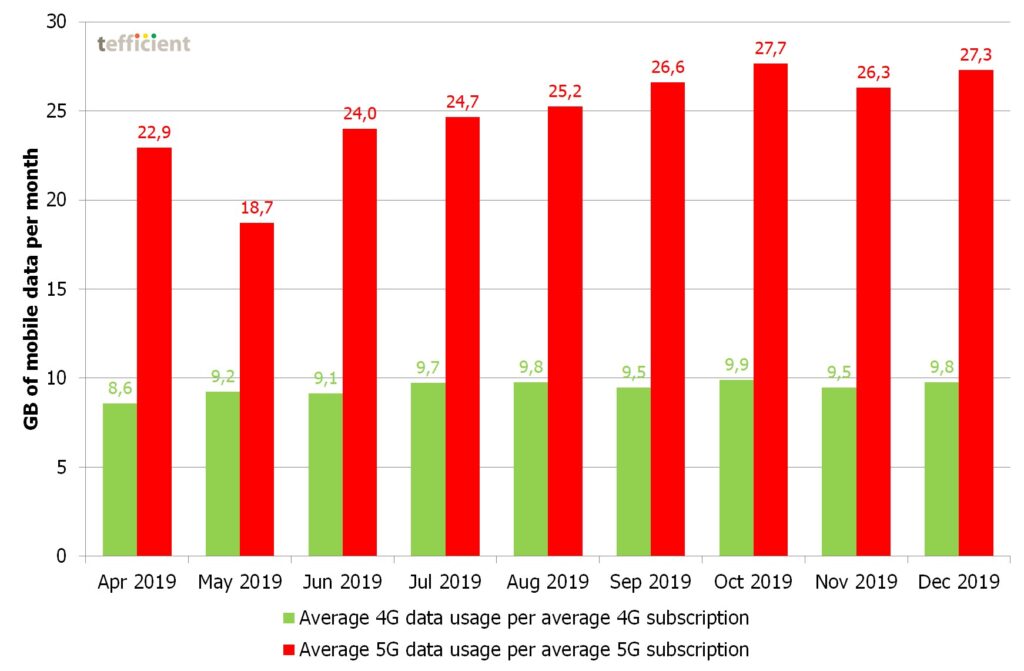
In December the average 4G subscriber used 9.8 GB of mobile data whereas the average 5G subscriber used three times more: 27.3 GB.
But since unlimited plans are much more frequent in 5G than in 4G we can’t just conclude that it’s 5G in itself that drives usage. Our next graph compares apples to apples:
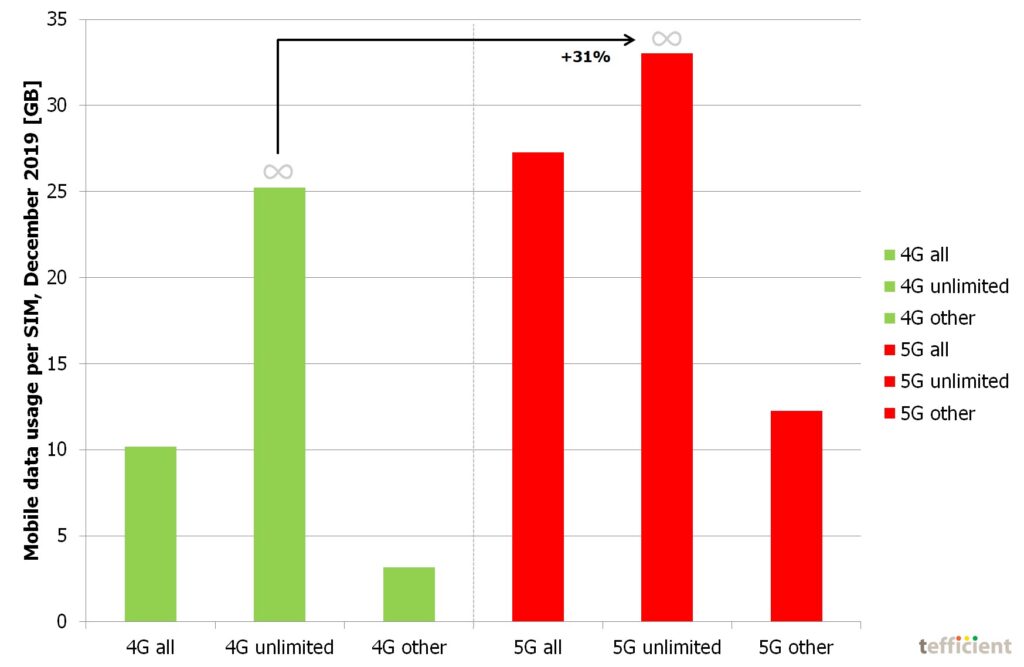
A subscriber with an unlimited 4G plan consumed much more data – 25 GB – than the average 4G subscriber. But a subscriber with an unlimited 5G plan consumed 31% more – 33 GB. That is perhaps a more correct estimation of the 4G-to-5G effect when all other things are equal.
If we plot the 5G share of SIM base against the 5G share of total data traffic we get our ‘snail trail’ graph.
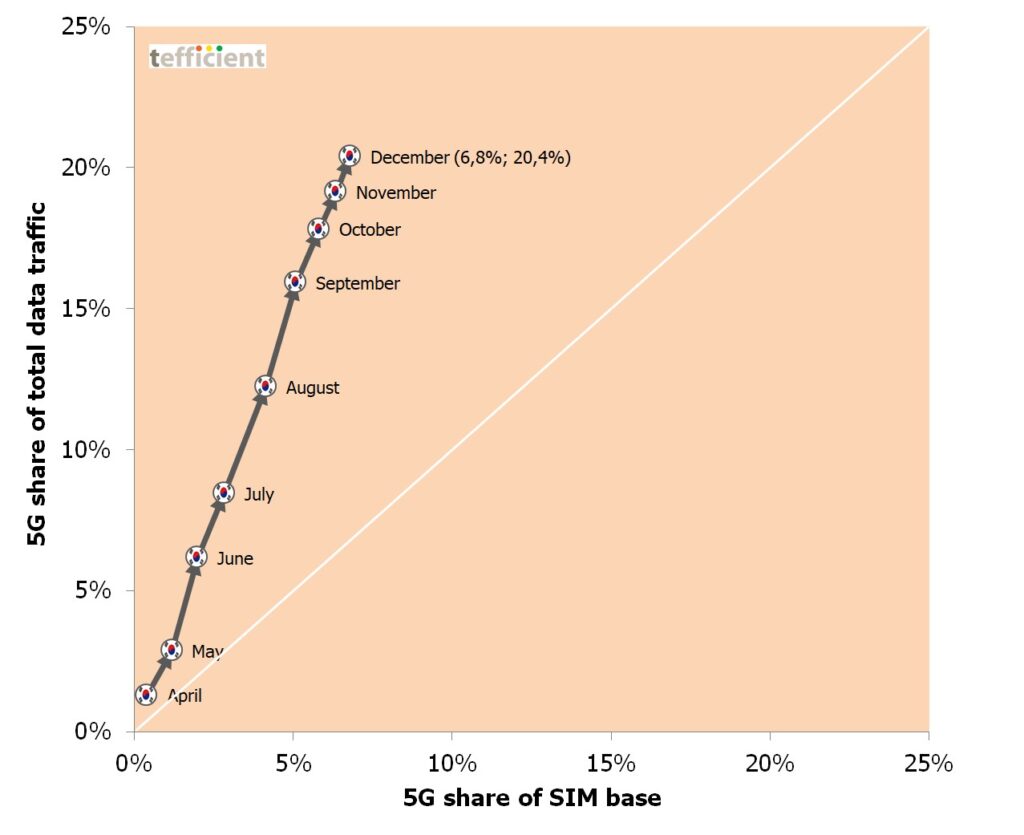
If there would be equilibrium between traffic and subscriptions, the snail trail would have followed the diagonal white line. In reality the 5G data traffic growth has been much quicker than the 5G subscription growth. But it’s also clear that the steps have become shorter in the more recent months. Korea ended 2019 with 6.8% of subscriptions on 5G – but 20.4% of traffic. After just nine months.
If we draw a graph on the mobile data traffic development month-by-month for the past seven years, it looks as below.
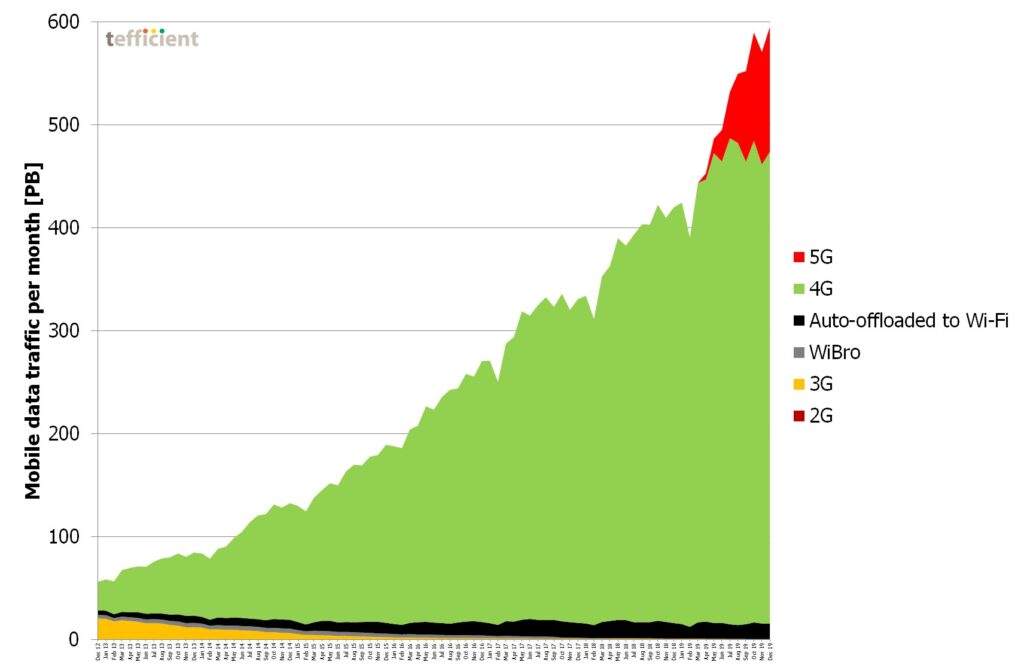
Note how 4G traffic quickly came to dominate. In the last month without 5G, in March 2019, 4G represented 96.3% of the traffic, traffic auto-offloaded to operator Wi-Fi 3.6% while 2G and 3G represented a mere 0.2%. After nine months with 5G, in December 2019, the distribution was:
- 4G 77.0%
- Wi-Fi 2.5%
- 2G and 3G 0.0% (rounded)
- 5G 20.4%
What’s so interesting with the graph above is that 5G hasn’t just replaced 4G traffic, it has principally been incremental to 4G – 5G has had a visible hockey stick effect on the total traffic.
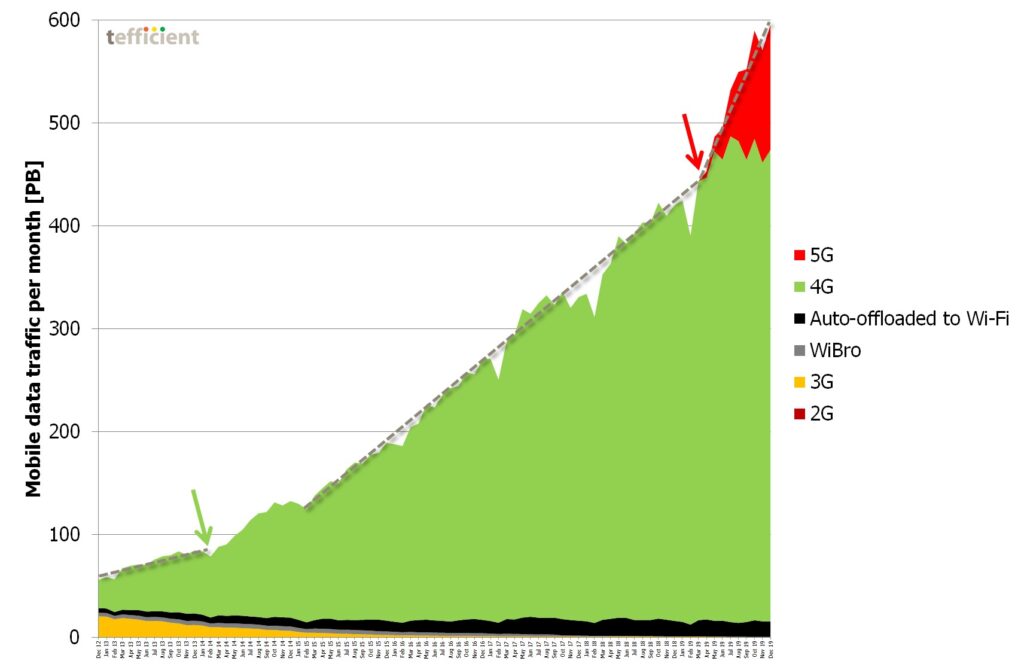
In the graph above, the first (green) arrow highlights the first inflection point in Korean data traffic. At this time, early 2014, the first plans with unlimited data volume were introduced. They were not truly unlimited though; after a certain daily allowance, the speed was throttled to a lower speed – 1, 3 or 5 Mbit/s depending on the price of the plan. But it had a visible effect on traffic, especially in the short term. From 2015 until the introduction of 5G, the traffic growth was more or less linear, but at the second (red) arrow), there was a new inflection point – when 5G was introduced.
Nobody should think that 121 petabyte of data – that’s how much the 5G networks carried in the month of December – happens by itself, though. The Korean operators have done some serious rollout.

The graph above shows the development in the number of 5G base stations (constructed = grey, activated = red) and in the number of sites equipped with 5G (black) of the Korean operator KT.
As of January 2020, KT has constructed more than 80000 5G base stations of which more than 70000 are activated. These are built on more than 40000 sites. By any standard, these are very impressive figures. The graph is also showing that in between June and September 2019, KT added around 18000 5G sites and more than 35000 5G base stations to its network. Try to match that rollout speed, folks.
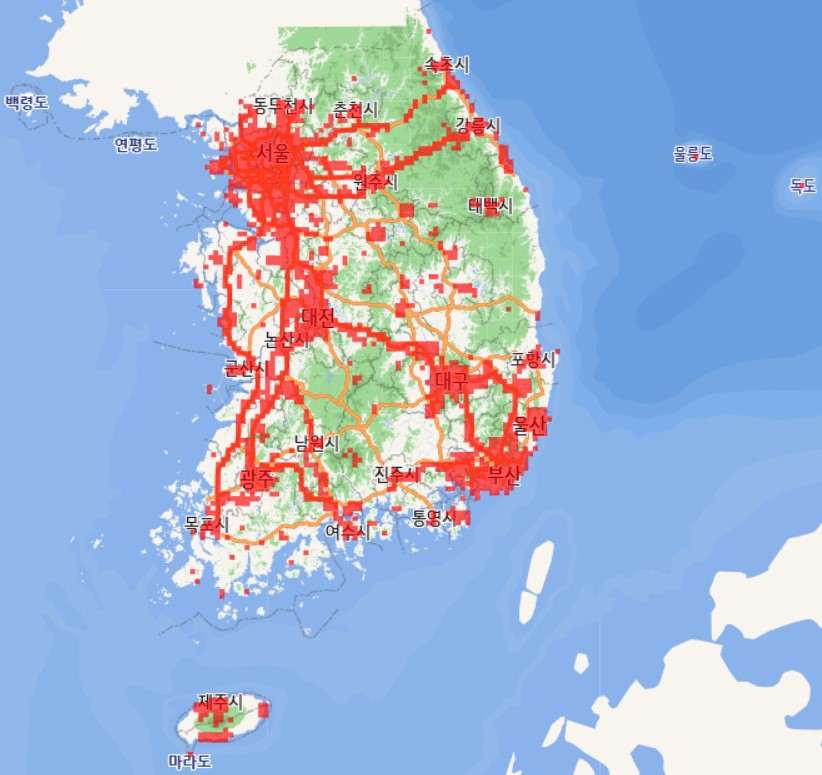
The national coverage that these 40000 5G sites with 70000 operational base stations – all on 3.5 GHz – bring is shown above.
Yet you might have read reports on customer dissatisfaction with 5G. And, yes, there has been much complaining about it in Korean media – especially initially.
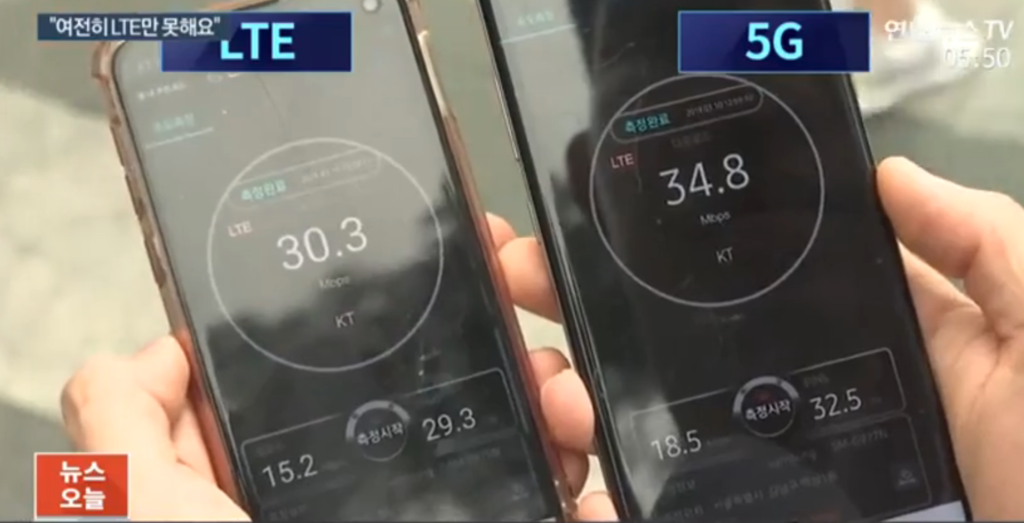
But before you take articles like this WSJ piece based on two consumer interviews as evidence of a 5G failure in Korea, you have to understand what 5G competes with: The world’s absolutely best 4G networks. The picture below shows the 4G coverage of KT.
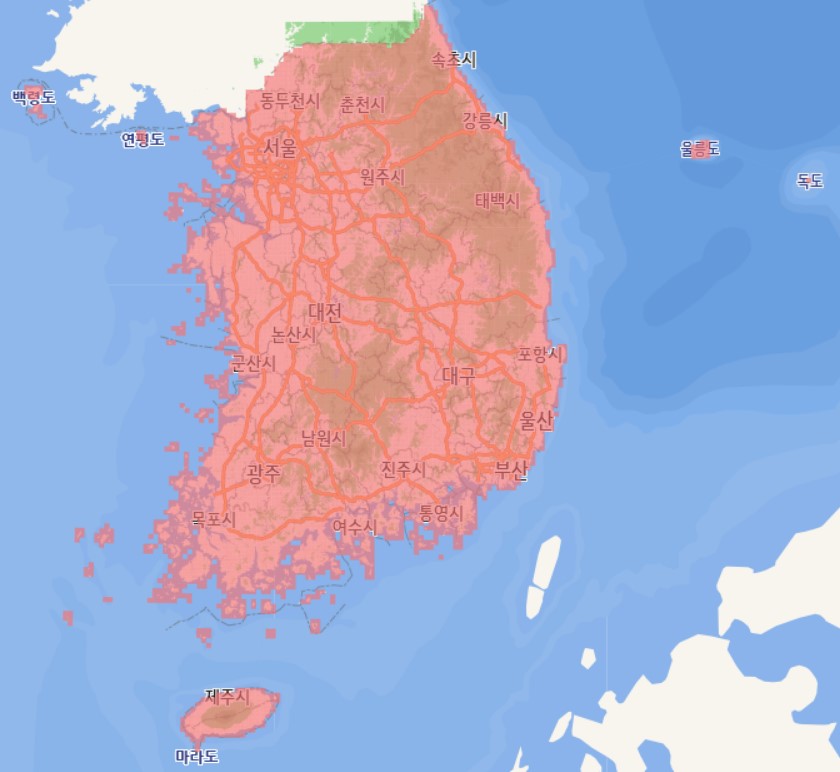
Among the three operators, Korea has something like 800000 4G base stations. The country is 100000 square kilometres, about the size of the Irish island.
You can imagine that the expectations of Koreans on 5G have been sky high.
Of course there have been teething issues – something the operators and vendors have been open about. There’s been nothing wrong with the rollout ambition, though. But the gap to 4G’s site numbers is wide.
KT isn’t just openly reporting its 5G base station count; it also reports its supplier split. We thought the following pie charts might be of interest as it shows a totally different distribution of network vendors than what we are used to in Europe.
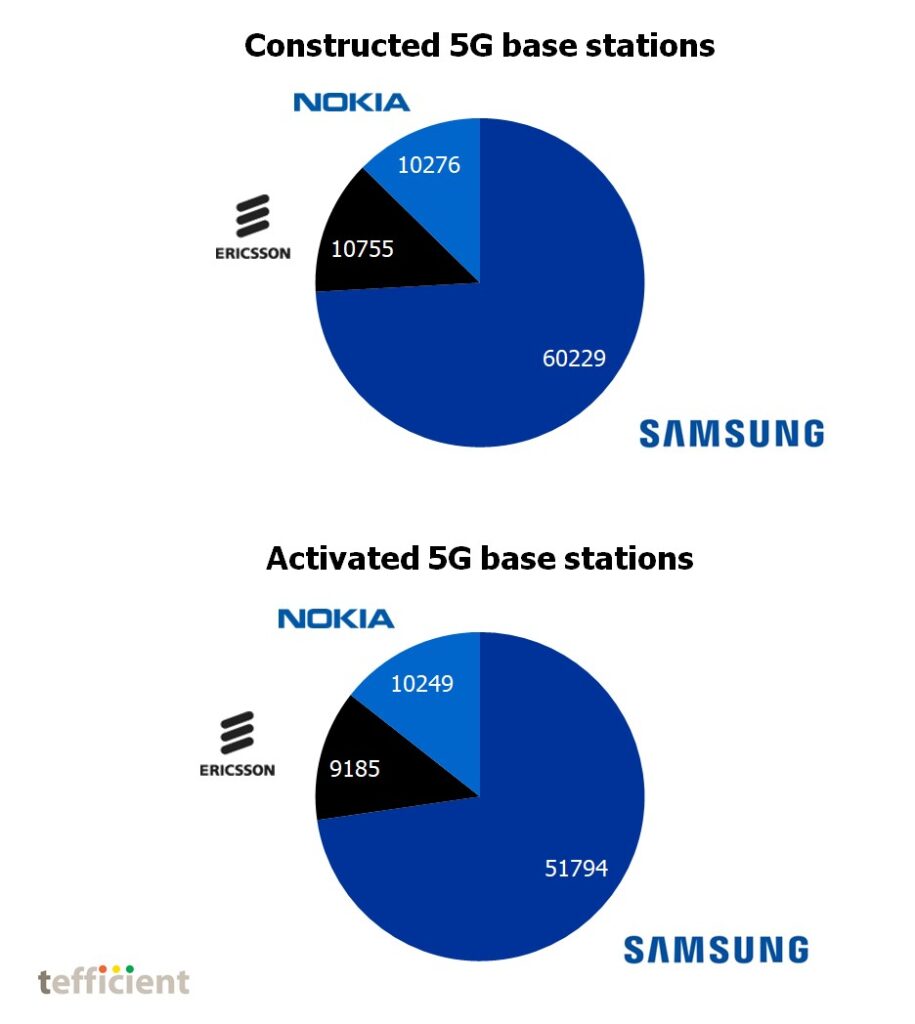
Samsung Networks has delivered 74% of the constructed and 73% of the activated base stations in KT’s 5G network. Ericsson and Nokia each holds a 13% market share.
The supplier situation at SK Telecom is likely quite similar whereas LG U+ as the only Korean MNO has Huawei as vendor.
Globally, Samsung Networks has a market share of about 11% – with a target to reach 20% with the help of 5G.

These were a few random facts from the world’s only market for which useful 5G data is reported – South Korea. If you find it exciting and wonder how it could be translated into your market, please contact us for consultation.
